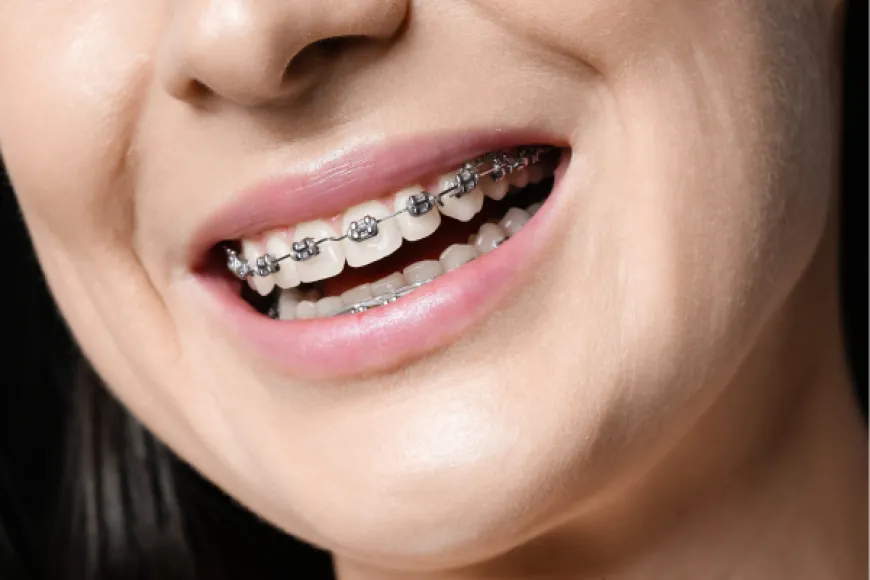Teeth Braces Everything You Need to Know Before Getting Started
Get your teeth fixed in the shortest time possible. Uneven teeth in their right place. Want to know about Teeth Braces costs in Dubai UAE? Visit us now!

Teeth braces are a popular dental solution for those looking to improve their smile, correct misalignments, or address various dental issues. Whether you're a teenager or an adult, braces can offer significant benefits. However, before embarking on your orthodontic journey, it's essential to understand the different types of braces, the process, costs, and aftercare. This guide will walk you through everything you need to know before getting braces.
What Are Teeth Braces?
Teeth braces, or orthodontic braces, are dental devices designed to straighten teeth, improve bite alignment, and enhance overall oral health. They work by gradually applying pressure to your Teeth Braces Cost in Dubai, moving them into their correct positions over time. Braces can be used to treat various dental issues, including:
- Crooked Teeth: Teeth that are misaligned or overlapping.
- Overbite: When the upper front teeth significantly overlap the lower teeth.
- Underbite: When the lower teeth protrude in front of the upper teeth.
- Crossbite: When some upper teeth rest inside the lower teeth.
- Open Bite: When there is a gap between the front or back teeth when biting down.
Braces not only improve appearance but also help with bite function, making it easier to chew and speak.
Different Types of Braces:
There are several types of braces to choose from, depending on your preference, dental needs, and budget. Here's a rundown of the most common options:
Metal Braces:
Metal braces are the most traditional and commonly used type. Made from high-grade stainless steel, they consist of brackets that are attached to each tooth and connected with a wire. Metal braces are highly effective, but they are also the most visible.
Ceramic Braces:
Ceramic braces function similarly to metal braces but are less noticeable. They use clear or tooth-colored brackets and wires, making them a popular choice for adults and teens who are concerned about aesthetics. However, they tend to be more fragile and may stain more easily than metal braces.
Lingual Braces:
Lingual braces are placed on the back of your teeth, making them nearly invisible to others. They offer the same effectiveness as metal braces, but they can be more difficult to clean and may cause irritation to the tongue.
Invisalign and Clear Aligners:
Invisalign and other clear aligner systems are a more recent innovation. These custom-made, clear plastic aligners are designed to gradually move teeth into alignment without the use of brackets or wires. They are removable, making it easier to maintain oral hygiene and eat comfortably. However, they may not be suitable for more severe alignment issues.
The Braces Process: What to Expect:
Getting braces involves a series of steps that require patience and commitment. Here’s an overview of the typical process:
Initial Consultation:
Your orthodontist will begin with a thorough examination, including X-rays and impressions of your teeth. They will discuss your specific dental needs and recommend the best type of braces for your situation. During this consultation, you’ll also discuss the estimated duration of treatment, typically ranging from 12 months to 3 years, depending on the complexity of your case.
Getting Your Braces On:
Once your braces have been ordered and custom-fitted, the next step is to have them placed. This is a non-painful procedure, although you may experience some discomfort afterward as your teeth start to shift. The process typically takes about 1-2 hours and involves attaching brackets to your teeth with a special adhesive, followed by threading the wire through the brackets and securing them with small elastic bands.
Regular Adjustments:
After the initial fitting, you’ll need to visit your orthodontist every 4 to 6 weeks for adjustments. During these appointments, your orthodontist will tighten the wires and possibly replace any rubber bands or ligatures. These adjustments help to continue moving your teeth into their desired positions.
Retainers:
After the braces are removed, you'll need to wear a retainer to ensure that your teeth stay in their new position. Retainers can be permanent or removable, and wearing them is crucial for maintaining the results of your treatment.
How Long Do Braces Take to Work?
The duration of braces treatment varies from person to person. On average, the process takes about 18 to 24 months, but it can be shorter or longer depending on several factors, such as:
- Age: Younger patients typically experience faster results because their bones are still growing and are more responsive to movement.
- Type of Dental Issue: Simple alignment problems may require less time, while severe bite issues or complex misalignments could extend the treatment duration.
- Compliance: Following your orthodontist’s instructions, such as wearing rubber bands or a retainer, can significantly impact the overall timeline.
Aftercare: Maintaining Braces and Oral Hygiene:
Taking care of your braces is crucial to achieving the best possible results. Here are some key aftercare tips:
Brushing and Flossing:
With braces, it’s more challenging to maintain oral hygiene. You’ll need to brush your teeth at least twice a day with a soft-bristled toothbrush and fluoride toothpaste. Special tools like interdental brushes and floss threaders may also help you clean between the brackets and wires.
Avoid Certain Foods:
Certain foods can damage your braces or cause discomfort. Avoid hard, sticky, and chewy foods like popcorn, caramel, chewing gum, and ice. Instead, opt for softer foods such as yogurt, pasta, and fruits.
Wear a Mouthguard if Necessary:
If you play sports, wearing a mouthguard is recommended to protect your braces from damage during physical activities.












